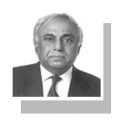By Sakib Sherani
Published in Dawn on September 14, 2023
PAKISTAN is experiencing its most severe economic crisis in recent history. However, as I have argued previously, this crisis is “a crisis like no other” (Dawn, May 2022). It is not just an economic meltdown, but a confluence of myriad and complex challenges in the political, governance and environment domains.
With regards to the economy, the current episode is comparable in many ways to the economic crises that have devastated countries such as Argentina, Mexico, Greece and Lebanon, etc in the past. Public commentators as well as policymakers appear to have been slow to recognise the magnitude and complexity of the crisis. Partly due to a lack of appreciation, and largely due to political considerations, the policy response since last year has also been slow, behind the curve and, now, deeply flawed.
More recent plans formulated to respond to the perennial crisis via attracting investment in a handful of sectors of the economy are overly optimistic as well as simplistic, reducing the country’s myriad and complex problems that hinder capital formation, the creation of an entrepreneurial ecosystem, the development of a vibrant export sector, etc, down to a mere shortage of dollar liquidity. For these reasons, it is important to understand why the crisis Pakistan is currently experiencing is so different than the past.
First, this one is unprecedented in its severity as well as its complexity since it has emanated from a confluence of multiple shocks. A large terms of trade shock since 2021 coincided with the impact of a ‘sudden stop’ in external capital availability caused by the aggressive monetary tightening by the US Federal Reserve. In addition, the country is in a full-blown public debt crisis, with the need for a very large fiscal adjustment over the course of the next few years, one that could total around three to four per cent of GDP — by far the highest the country has ever undertaken.
The current crisis is very different from past ones in nature, scope as well as severity.
Along with the fiscal adjustment, Pakistan also needs a degree of orderly (ie negotiated) sovereign debt restructuring or re-profiling, without which its debt repayment capacity will remain unsustainable. To compound the situation, the crisis could also envelope the country’s banking sector at some later stage, despite substantial capital and liquidity buffers at present (more on this later).
Second, the sense of a polycrisis is accentuated by the fact that the country is facing a political and constitutional crisis since April 2022. Political uncertainty and institutional gridlock are complicating policy responses and ‘whole-of-nation’ approaches that are required for an early resolution.
Third, the current economic crisis is accompanied by a crisis of confidence — not just with regard to the prospects of the economy or the rupee in the short term, but more fundamentally, by a lack of confidence in how the country is run, and in the ability as well as willingness of the elites responsible to change course. Investors, economic agents as well as the country’s youth are voting with their feet via capital flight, dollar-isation and brain drain. Of all the problems afflicting us, the vaporisation of confidence in Pakistan’s long-run prospects is perhaps the most pernicious — and unrecognised.
Fourth, the country’s banking sector could experience heightened stress in the months ahead, unlike in previous episodes. There are two potential channels: 1) the government, the banking system’s largest borrower, is under increasing fiscal duress, with its fiscal position now clearly unsustainable; 2) any restructuring of sovereign external debt could include domestic public debt — with bank credit to government the largest component. A significant haircut for banks could be inevitable under this scenario.
In this complex and challenging environment, the prospects for Pakistan’s economy for the next three to four years appear less than sanguine, despite the relative optimism surrounding the securing of a nine-month Stand-By Arrangement from the IMF. While the near-term risk of a sovereign default has been averted for the interim, contingent on continued implementation of IMF conditionality, stabilisation and austerity policies will need to remain in place beyond the current SBA as the country undertakes a debt workout, one that could include domestic debt as mentioned above. Economic growth will remain suppressed and financial conditions restrictive, while the overall business environment will be challenging, especially for the formal sector.
These difficult conditions are likely to lead to industry and business closures, many permanently, in economic ‘scarring’.
Macroeconomic risks are likely to remain elevated, which could be compounded by the risk of political instability. Climate-related shocks are grey rhinos (slow-moving, probable risks with high impacts) that can precipitate at any time over the forecast horizon. Vulnerability to external shocks will remain high until ‘break out’ conditions prevail.
Potential ‘break out’ conditions include: a firm resolution of the current political deadlock, holding of free and fair elections together with an orderly and timely transition to a government with a clear ‘reformist’ agenda and a public mandate, a return to rule of law and a functioning constitutional democracy that ensures genuine participation and voice for citizens, especially the disenchanted youth, a benign global economic environment, timely as well as sustained availability of adequate external financing and support, including a successor IMF programme with higher quota access and a greater emphasis on structural reform, a quick and orderly sovereign debt re-profiling, and reverse capital flight.
Each of the conditions above is necessary though not sufficient on its own. Ultimately, the surest guarantee of finding a path to recovery and durable prosperity is for all stakeholders to view the current crisis as an opportunity for wide-ranging, deep and credible reform.
Tailpiece: Unfortunately, another IMF programme appears inevitable, simply because despite the populist talk, there is no credible and workable alternative plan that anyone has crafted or presented. The glib talk on the media about living without the IMF is, unfortunately, without any basis, and is designed to play to the gallery. Pakistan needs to have its external debt rescheduled, and an IMF programme is necessary for this process.




